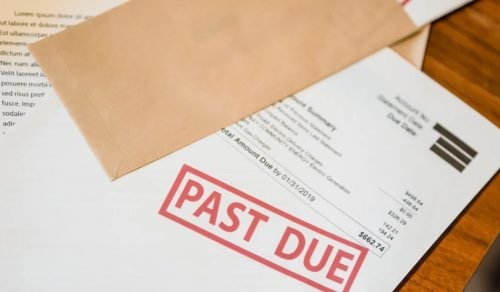Receiving unexpected letters can be stressful, especially when they come from an address you don’t recognise. Over the past few years, many people in the UK have reported receiving suspicious mail from PO Box 6887, Coventry, CV3 9SD. These letters often claim to be parking fines, debt collection notices, or even NHS-related correspondence.
While some letters might appear official, investigations and reports suggest that many of them are scams designed to pressure recipients into making quick payments. This guide explains what these letters are, how to identify them, and what you should do if one arrives at your home.
What Is PO Box 6887 Coventry?
A PO Box (Post Office Box) is simply a mailing address provided by Royal Mail. Legitimate companies often use them for convenience and security. However, PO Boxes can also be misused by fraudsters who want to remain anonymous.
The address PO Box 6887 Coventry has been linked repeatedly to letters that look official but contain errors, suspicious payment instructions, and threats that don’t stand up to scrutiny. This has made it one of the most talked-about addresses in scam discussions online.
Types of Suspicious Letters Linked to PO Box 6887
Parking Fine Notices
The most common complaint involves fake parking fines. These letters claim that the recipient’s car was parked illegally or overstayed in a car park. Many of these fines have incorrect dates, times, or even the wrong vehicle registration numbers.
Debt Collection Demands
Other letters claim to come from debt collection agencies chasing unpaid accounts. In most cases, the recipient has never used the service in question. The vague threats of court action are designed to scare people into paying quickly.
NHS or Healthcare Letters
A smaller but concerning number of letters pretend to come from the NHS. They may demand payment for medical bills or suggest that compensation is owed. The NHS, however, does not communicate through anonymous PO Boxes, so these are almost certainly fraudulent.
How to Spot a Scam Letter
Table 1: Key Differences Between Genuine and Fake Letters
| Factor | Genuine Letter | Suspicious/Scam Letter |
|---|---|---|
| Sender Details | Clearly identified company or authority, verifiable online | Vague or fake company name, no official website |
| Payment Options | Secure portals, debit/credit cards | Bank transfer, QR codes, unfamiliar accounts |
| Appeals Process | Clear, detailed process explained | No appeal option or vague instructions |
| Language Used | Professional, polite, formal | Aggressive, urgent, full of errors |
| Reference Numbers | Accurate, matches your records | Generic, random, or inconsistent |
| Evidence Provided | Parking photos, bills, account statements | No supporting evidence or proof |
Step-by-Step Actions to Take if You Receive a Letter
Numbered List 1 – How to Handle a Suspicious Letter
-
Stay Calm and Don’t Rush
Scammers rely on urgency. Take time to examine the letter carefully. -
Check the Details
Look at the car registration number, dates, or account details. If anything doesn’t match, it’s likely fake. -
Verify the Sender Independently
Use the official company or NHS website to confirm, not the contact details in the letter. -
Assess the Payment Request
Legitimate organisations don’t demand unusual transfers or QR code payments. -
Keep a Record
Save copies of the letter and envelope for evidence.
Common Red Flags to Look Out For
Here are three quick warning signs that a letter may be fake:
-
The letter creates urgency by threatening immediate legal action.
-
It demands payment through unfamiliar or insecure methods.
-
It contains errors such as spelling mistakes, wrong names, or incorrect details.
Real Complaints from UK Residents

Across online forums, many people have shared stories about mail from PO Box 6887 Coventry. Some were fined for visiting car parks they had never been to, while others received demands for debts linked to companies they had never used. In some cases, the letters appeared so convincing that recipients almost paid before noticing the mistakes. These real-world experiences highlight the need for vigilance.
Table 2: Common Types of Scams Connected to PO Box 6887
| Scam Type | Description | Typical Goal of the Scammer |
|---|---|---|
| Fake Parking Fine | Claims your vehicle parked illegally | To make you pay a non-existent fine |
| Debt Recovery Letter | Demands repayment for an unknown debt | To pressure you into paying money you don’t owe |
| Healthcare/NHS Scam | Pretends to be NHS correspondence | To collect personal or banking details |
| Phishing via QR Code | Directs you to fake websites | To steal sensitive information |
Reporting and Seeking Help
If you believe you have received a scam letter, it is important to report it. The UK’s Action Fraud centre is the national point of contact for reporting fraud and cybercrime. They will log your case and may investigate further. You can also contact Citizens Advice, who provide free guidance and can confirm whether similar cases have been reported.
If you have already made a payment, notify your bank immediately. Many banks can freeze transactions if reported quickly. Keeping detailed records of the letter will also help if you need to take further action.
Numbered List 2 – Steps If You Already Paid a Scam Letter
-
Call Your Bank Immediately
Explain the situation and ask if the payment can be stopped or reversed. -
Report to Action Fraud
Provide them with a copy of the letter, payment details, and any contact you’ve had. -
Notify Citizens Advice
They can give legal and financial advice tailored to your situation. -
Stay Alert for Follow-Ups
Once scammers succeed, they may target you again, so remain cautious.
Protecting Yourself and Your Family
Scammers often target vulnerable people, especially the elderly, who may not be aware of modern fraud tactics. Educating your family is just as important as protecting yourself. Make sure they know not to share banking details over the phone or online and to always verify letters through official channels.
Bulleted List 2 – Simple Tips to Stay Safe
-
Always cross-check suspicious mail with official company websites.
-
Never share bank details with unverified contacts.
-
Keep evidence of scam letters for reporting purposes.
Final Thoughts

Receiving mail from PO Box 6887 Coventry does not automatically mean it is fake, but the number of reported scams linked to this address is high enough to warrant serious caution. Always take time to verify the sender, check the details carefully, and never make a payment unless you are completely sure of the letter’s authenticity.
Scammers thrive on panic and urgency, but by staying calm, conducting your own checks, and reporting suspicious mail, you can protect yourself and others from falling victim to fraud.
Conclusion PO Box 6887 Coventr
The safest way to deal with mail from PO Box 6887 Coventry is to treat it with caution. Genuine companies will always provide clear evidence, an appeals process, and secure payment methods. If something feels off, trust your instincts and double-check through official channels.
By staying vigilant, educating loved ones, and reporting scams to the right authorities, you reduce the chances of becoming a victim and help protect others from similar fraudulent activity.
Also Read: Lottib81
